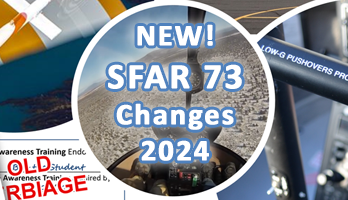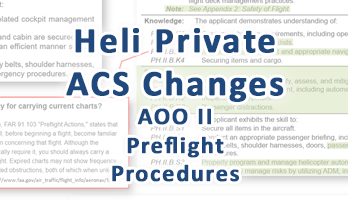This is the eighteenth training flight in a series following a student through his flight training from day 1 to checkride in an R22.
Due to flying with one door off, the airflow creates some extra noise, which means some interference in the audio in some parts of the video.
Some highlights of this lesson:
- Operations in towered (Class D) airspace (RDM -Redmond)
- Running landings
Below the video are time-stamped notes/tips for the flight.
NOTES/TIPS:
00:35 do hover power checks at stationary hover
03:00 demonstration of entering class D airspace (RDM -Redmond)
05:35 try to visualize the layout of the runways and how you will enter the pattern
6:50 know runway widths and slopes to get ahead of possible visual illusions affecting glide path
07:55 how will wind direction and strength affect approach?
08:10 use phrase “solo student” when 1st flying solo into towered airports and the phrase “say again SLOWLY” if need be
08:30 use compass to help visualize correct runway, especially crossing runways
09:15 try to think ahead of possible instructions you might receive so you aren’t surprised or flustered. You MUST hear “Cleared to land runway XX” to be allowed to land
10:10 keep in mind the runway you are approaching and your current heading to help keep situational awareness
10:35 don’t give up responsibility to ‘see and avoid’ just because you are at a controlled airport
14:20 if power limited, push forward gently
17:50 sometimes a single controller will run both tower and ground frequencies, and so you may hear ground instructions on tower frequency
19:40 demonstration of slow forward cyclic when power limited on takeoff
21:30 make sure you read back runway number, type of landing and your tail number when acknowledging a landing clearance
26:05 apart from initial contact, don’t have to start all radio calls with “Redmond Tower…”
27:10 another helicopter asking for “present position departure” (from the non movement area ramp)
28:10 “Wilco”
30:25 fly full length of runway unless told “early turn” or “turn at your discretion”
31:00 when to change frequency from tower
32:45 not all airspace has standard dimensions
33:25 sometimes best to stay on frequency (when told “frequency change approved”) until clear airspace, to hear incoming traffic
35:05 carb heat requirements are based on temperature and dew point spread, but that spread is reduced (generally) by about 2.5 C per 1000′ above the reporting station
35:45 keep listening for traffic departing and heading your way
38:35 demonstration (not the best) of running landing
39:45 give space around your calls with the transmit button or you cut off the start/end of your call
41:05 one red (and three white) light on PAPI means slightly above glide slope (above 3 degrees generally) used for normal airplane approach
43:40 traffic already in the pattern generally has right of way over traffic trying to enter the pattern
45:10 airplane tries to turn base behind and inside us on right traffic
46:00 go around practice
49:30 student does running landing
54:35 include base (left or right) in call turning final so traffic know which side of the pattern to look for you.
To view all the videos in this series, check out this YouTube playlist of all the Flight Training Sessions (Full-Length Unedited)





